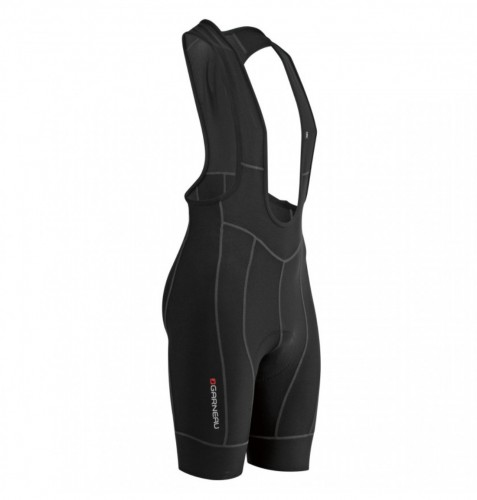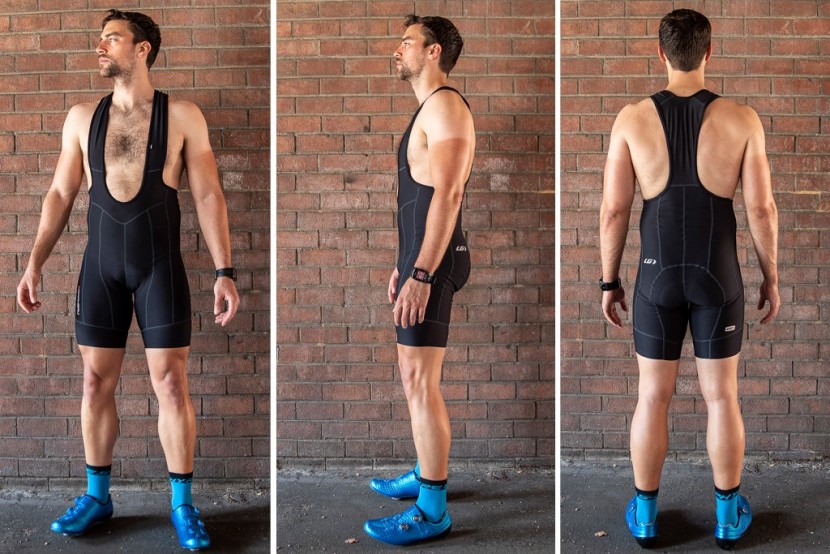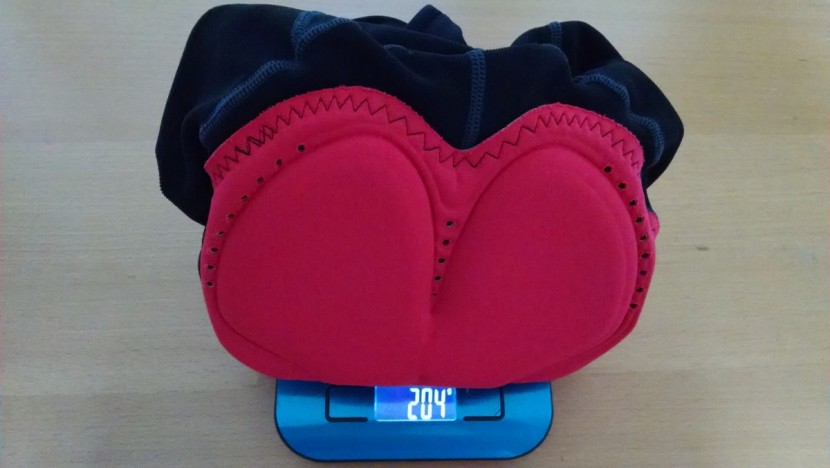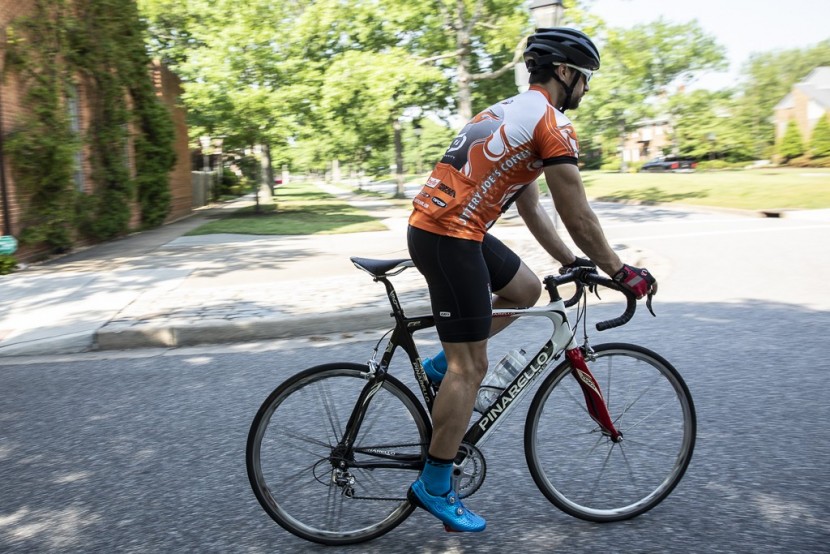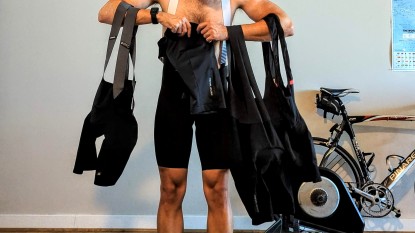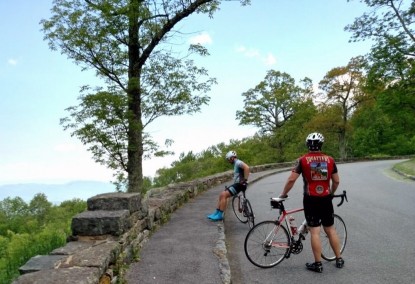Louis Garneau Fit Sensor 2 Bib Review
Our Verdict
Our Analysis and Test Results
Take a look at our full review below to find our analysis of the Fit Sensor 2s and their top competitors across a range of measurements.
Style
For all it lacks in chromatic pizazz, it compensates in bold lines that accentuate the working parts of the rider. All told, these aren't ugly, but they're not especially attractive in the world of cycling. Black is the safe baseline choice for the occasional rec rider and the solo-dolo guy, but for some reason, the peloton tends to bring out the peacocking and the colors, which these utilitarian shorts lack.
The Fit Sensor 2 are about as stylish as the new Best Bang for the Buck winners, the Pearl Izumi Quest Splice, which use a bit of color and the absence of lines to create a moderately appealing product. If you are inclined to turn heads, we suggest looking at last year's Editors' Choice, the SUGOi Evolution Bibs or the Louis Garneau CB Carbon 2.
Breathability
Breathability is not necessarily an area of excellence for these. They use double-faced Polartec Fit Sensor material on the shorts, which has a 24% mix of polyester, typically a hydrophobic blend to assist in moisture-wicking. Unfortunately, they seem to hold moisture, though that could be from the thick gauge of fabric used. They had much more of a wetsuit feel, rather than the preferred skinsuit - at least for hot weather and hard work rides.
The Airzone chamois uses LG's patented Ergo Air concept to improve ventilation in its high-density memory foam padding, but it still tends to hold more moisture than other models like the Pearl Izumi Quest Splice. Luckily they treated their chamois with an anti-bacterial solution to mitigate bacterial growth from the dampness. We suggest looking at the two LG bibs if you're interested in a more aerated ride.
Padding and Protection
LG does a great job with its padding, and there's no exception with the Sensor 2. They use the Airzone chamois with beveled molding edges and high-density perforated memory foam that folds with the body and prevents bunching - a point of great consternation that usually kicks in after about 20 minutes of riding - if it's going to happen. The forgiving, targeted foam padding makes for a good ride.
Their superior attributes easily put them up near the top of the range, surpassing some of the overall higher scorers. They come in alongside the previous Top Pick for Best Budget Buy Zoot Active Tri shorts, and the Louis Garneau CB Carbon 2. If you want an even more comfortable chamois, you should take a closer look at the previous Editors' Choice, the SUGOi Evolution Bibs.
Comfort and Fit
One of the best qualities of the Sensor 2s was their fit. They use a 10-panel design with flatlock seams to allow the shorts to meld to your body, avoiding chafing and rub - there's nothing quite as annoying as unearned blisters. It's also worth noting that they can be a bit warm in hot weather, so they are best suited to spring, fall, and winter riding.
One of the things we liked about these was their wide, smooth shoulder straps that kept the britches from sagging, but also minimized the shoulder irritation and didn't make us think about nipple Band-Aids once. As great as they were, they came in a bit behind most of the award winners. If you are looking for a more comfortable fit, we suggest trying out the new Top Pick for Best Bang for the Buck Pearl Izumi Quest Splice, which allows a little more freedom of movement.
Efficiency and Pedal Friendliness
A high mix of nylon and polyester and a heavy gauge give them very supportive quality. The significant trade-off here is that the more supportive the material, the more restrictive it is. That means they felt a lot more like a wetsuit than a skinsuit and riding in diving gear isn't always the most psychologically forgiving activity - especially for the sort of weenies who regularly check for flats and rubbing brakes on off days.
The material did an excellent job of hugging the body and snapping back into place, but its resistance was a nagging annoyance, and that set it back in the ratings a bit. The more agreeable threads ended up taking home awards. If epidermal cling and freedom of movement are the sort of thing you're into, give these three award winners a go: SUGOi Evolution Bibs, and Izumi Quest Splice.
Durability
Tenacity in cycling shorts often arises from secure seams, higher proportions of nylon or dependable fabrics, and smart, streamlined design. The Fit Sensor 2s have these qualities in varying degrees. On seams, they appear to have strong threading, but there have been complaints that the stitching has worn out faster than expected - something that you might anticipate given that the high number of ergonomic panels (ten of them) require so much more stitching than bibs with half the panels and a fraction of the form-fit. They also only use 60% nylon, compared to many of the other more durable models, which typically use 80% or more. This ratio could allow colors to wash out and accelerated wear along the high abrasion regions like the inner thighs.
We think these bibs will be fine for a few seasons of recreational riding, but if you are looking for something that you want to last for half a decade or something crazy (we suggest riding more), there are a few other models that should last you a bit longer. The Pearl Izumi Quest Splice bibs have fewer seams (read: weak points) and are 88% nylon, which greater improves their resistance to wear and tear, though they might fade earlier.
Best Applications
Spring, fall, and winter are where the Sensor 2s shine. They have an enveloping feel caused by their heavier gauge and inflexibility that is oddly welcome when it's chilly and breezy out. Riders that like the constraints of supportive clothes will like these.
Value
$99.99 is not a steep price to ask for these bib shorts, especially for supportive cool weather bibs. It doesn't hurt that their high mix of polyester drastically cuts down the amount of UV getting through to skin that doesn't always get the same sunblock lotion treatment as the face, arms, and lower legs.
Conclusion
We liked taking these out on rides when it wasn't 90 degrees. Somehow they felt comforting when it was breezy and chilly. Their fierce resistance to movement also meant they helped dull the biting wind. That said, they were not ideal on hot rides and cyclists looking to feel free and cool might not want to ride in these over the summer, but their excellent chamois merits at least a backup pair for short rides, cool rides, and longer rides.


